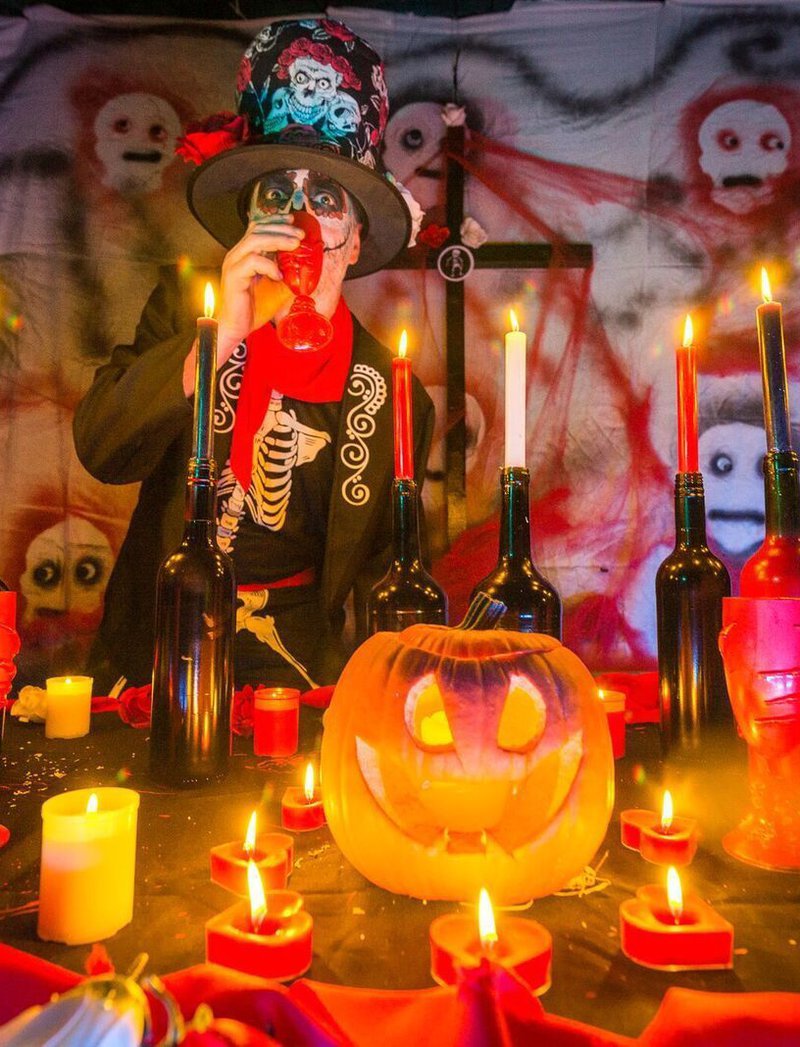Long-term resident
A EURO FOR THE GUY
Many moons ago, I got sent a questionnaire from a secondary school in Catalonia (I don’t remember exactly which one: too many moons) asking me about my school time experiences of Halloween. ’Did you enjoy Halloween?’ ’What kind of things were you given?’ ’How many doors did you knock on?’ Etc. And my answers were all in the negative, for the simple reason that when I was at school – and for two decades after I’d left – Halloween wasn’t celebrated in England anymore than it was in Catalonia. In Catalonia, at least since the end of the 18th century, on the night of October 31st, people had and often still have traditional funereal foods for supper (sweet potato, chestnuts and panellets, washed down with sweet wine); and the following day they go and visit the tombs of their loved ones. In England, we waited until November 5th, which is when we celebrated Guy Fawkes’s Night. Guy Fawkes – who, tellingly, insisted on being called Guido – was a died-in-the-wool Catholic born in York in 1570, the same year that his Queen, Elizabeth I, was excommunicated by the Pope and started persecuting the Catholics by banning their religion and murdering dozens of priests. It was hoped that her successor, James I – whose mother, Mary Queen of Scots, had been a Catholic until she was executed for being one – would go easy on the English Papists, but not a bit of it. He exiled all the priests and maintained the ban on Catholic rites. There were various failed Catholic plots to kidnap or kill King James but they all came to nought, until Fawkes and four other co-religionists met up in a London pub and devised a plan to blow up the Houses of Parliament. On November 4th, 1605, Fawkes was caught lurking in the basement of said Houses with matches in his pocket and 36 barrels of gunpowder within spitting distance. A dead giveaway. He was tortured and then hanged and chopped into four pieces. Since then, in the first week of November, English children have sat next to home-made effigies of Fawkes in the street, asking passers-by for ’a penny for the Guy’, before burning the effigy on top of a bonfire on the night of the fifth and letting off fireworks, while singing ’Remember, remember the fifth of November, gunpowder, treason and plot’ with a certain vehemence. I do indeed remember it well, as it was – for us children – one of the most exciting days of the year. There has, of course, been the occasional variation on the Guy Fawkes tradition: when Margaret Thatcher was elected for a third term in 1987, a lot of people burnt effigies of her instead. And a year later, Alan Moore and David Lloyd brought out an anarchist-leaning comic called ’V for Vendetta’, featuring a libertarian in a Guy Fawkes mask, which was made into a film in 2005 and spawned the (appropriately masked) Anonymous movement.
I can’t help thinking, though, that Anonymous might have got their symbols in a twist. The original Guy Fawkes fought for Spain in the Netherlands for an entire decade, trying to prevent the Dutch from having their own country. Fawkes was also famed for being prejudiced against the Scottish. In other words, he was a religious bigot and a confirmed unionist. I personally wouldn’t mind if Halloween – a festival derived from Celtic herders in Britain thousands of years ago, for whom October 31st was New Year’s Eve, when the demons and fairies came out to play – took a back seat (also in Catalonia), and let us burn Guy Fawkes – that old reactionary – to our heart’s content.


